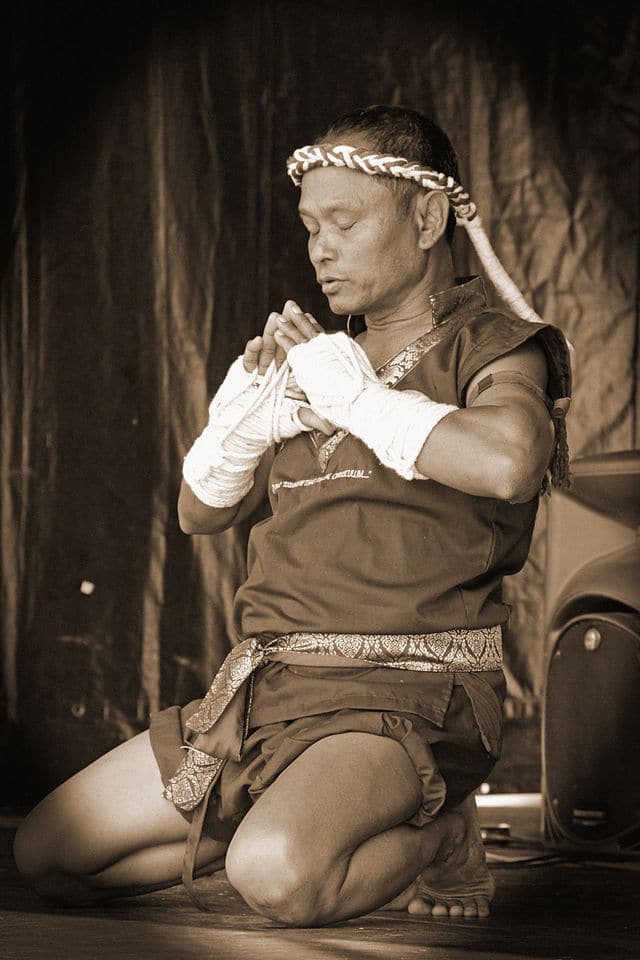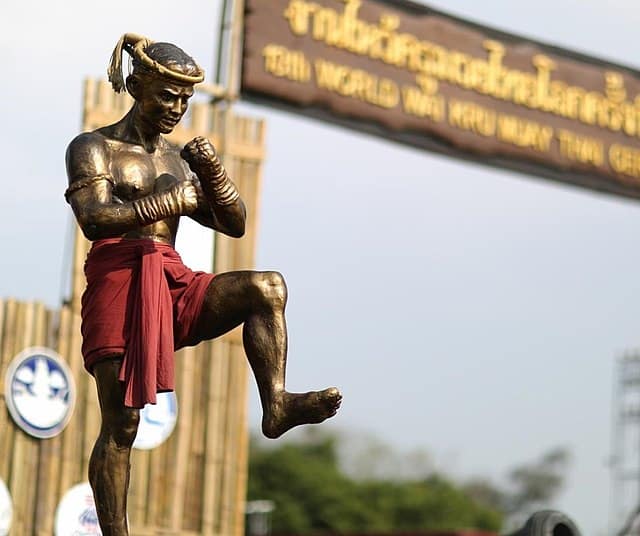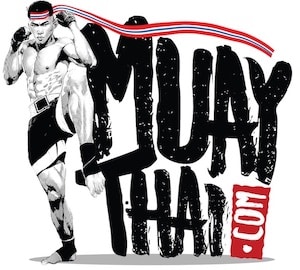Muay Thai History
Muay Thai history is a topic brimming with rituals, battles, generals, kings, and much more. Muay Thai history is rich for its cultural significance and stands as a testament to Thailand’s sovereignty and identity. Rooted in centuries of tradition, this ancient martial art is more than just a combat sport — it is a reflection of the nation’s resilience and spirit. Dating back many centuries, Muay Thai has evolved from a tool of liberation on the battlefield to a revered sport of strategy.
Muay Thai history is also synonymous with the entire history of the Thai nation itself. With roots that stretch back through centuries of tradition and evolution. From its ancient beginnings on the battlefield to its modern stature as a global phenomenon.
A Look At Muay Thai History
Origins and Legends
The origins of Muay Thai are shrouded in the mists of time. Legends recount the feats of larger-than-life figures. The first mention of martial arts developing in the region now named Thailand comes from 600 AD. Legends trace Muay Thai back to a hermit monk named Sukatanta, who established a martial arts school in the year 675 AD. This Ruesi, a monk who achieved enlightenment through meditation, passed on his knowledge to notable students. Among them was King Ram Kamhaeng of the Sukhothai Kingdom, who played a crucial role in perpetuating Muay Boran, the precursor to modern Muay Thai.
Muay Boran

Thinking of Muay Thai history, picture a time when Muay Thai was not just a sport, but a deadly martial art utilized for liberation. In times of war, it was a force used on the battlefield, used to ensure victory against oppressors. Statues paying homage to many mythical figures still adorn the Thai countryside. A reminder of their heroic deeds. Thailand even commemorates these legends with a national day dedicated to their bravery.
Muay Boran was the old term used to refer to martial arts in Thailand. Eventually, it would become Muay Thai. In Muay Thai history, there were multiple disciplines that fit under the Muay Boran term. Typically, the style one learned would be region-dependent. The primary Muay Boran styles, in Muay Thai history, are Muay Lopburi, Muay Korat, Muay Chaiya, plus the weapon system known as Krabi Krabong.
Between the 16th and 17th centuries, Muay Thai found its place in the military. King Naresuan introduced it to the Siamese military in 1560, marking a historical milestone in Muay Thai history. The sport’s earlier form, Muay Boran, was utilized in battles, showcasing its effectiveness in securing victories.
Phraya Phichai the Broken Sword

In the 1700s, Siamese general Phraya Phichai demonstrated the prowess of Muay Thai on the battlefield. Amid the tumultuous backdrop of oppressive Burmese rule, he led a rebellion that showcased the art’s power. When faced with a shattered sword, Phraya Phichai relied on Muay Thai techniques—precise strikes, elbow blows, and powerful knee strikes—to achieve victory and secure Thailand’s freedom.
During Phraya Phichai’s lifetime, the region of Siam, now known as Thailand, was under Burmese occupation. The Burmese had taken control of Ayutthaya, the former capital of Siam, and imposed their rule on the local people.
Phraya Phichai’s rise to prominence came during a crucial moment when the Burmese were facing their own conflicts, diverting their attention from Siam. Recognizing the opportunity, Phraya Phichai organized a rebellion against the Burmese forces.
Phraya Phichai’s sword broke during a key battle battle, leaving him without a weapon. However, he utilized his Muay Thai, and Muay Boran skills, employing dangerous strikes and techniques to overcome the attacking soldiers. Despite having no weapon, he used his bare hands to earn victory. Phraya Phichai’s leadership and success in battles against the Burmese made him a symbol of resistance and hope for the Thai people.
Nai Khanom Tom

Nai Khanom Tom, often revered as the “Father of Muay Thai” is a legendary figure in Muay Thai history. His story is steeped in folklore and embodies the spirit of Muay Thai’s resilience and skill. According to popular accounts, he was a skilled fighter with a natural talent for Muay Boran, the precursor to modern Muay Thai. His prowess led him to serve as a warrior during the Burmese-Siamese War.
Nai Khanom Tom was captured and put in prison under Burmese rule after Ayutthaya fell to the Burmese. King Mangra of Burma thought to hold a festival. There he would pit Burmese fighters against Thai prisoners. Nai Khanom Tom performed a Wai Kru before his match.
Nai Khanom Tom won his first match with ease, using his dangerous Muay Boran techniques. However, due to the Wai Kru, the event organizers felt that it was unfair as his opponent was awe-struck by the dance. Nai Khanom Tom then had to face successive Burmese opponents of which he dispatched each one with impressive skill.
King Mangra, of Burma, was so impressed that he said, “Every part of the Thai is blessed with venom even with his bare hands he can fell ten opponents.” The Burmese king then gave Nai Khanom Tom his freedom and offered him either money or wives for his incredible fight abilities.
Buddhism and Muay Thai
Buddhism and Muay Thai are tied to one another in Muay Thai history. As centuries passed, Muay Thai underwent a transformation, evolving from a martial art of war to a sport of finesse. The adoption of hand protection, from horse leather to rope and eventually gloves, mirrored the evolution of Muay Thai itself.
Yet, despite the changes in Muay Thai history, the spiritual traditions endured. Matches were once held at Buddhist temples And Muay Thai was quite often taught by Buddhist monks. These traditions carry forward with acts such as the Wai Kru, the Mongkon, and Pra Jiad.
Wai Kru
Before entering the ring, fighters perform this dance as a gesture of respect to their teachers, trainers, and spiritual guides. The dance also serves as a way to mentally prepare for the match, aligning the fighter’s intentions with the principles of honor.
Pra Jiad
The Pra Jiad are armbands worn by Muay Thai fighters as a form of protection and blessing before a fight. They are typically made of cloth and can be of various colors, with intricate designs and patterns. The Pra Jiad are traditionally blessed by a monk or a respected figure in the fighter’s community before being tied around the upper arms of the fighter. The tradition goes back to soldiers on the battlefield taking a cloth from their home with them into battle.
The Pra Jiad also symbolizes the connection between the fighter, their training, and their ancestors. They are often passed down through generations and hold the history of the fighter’s lineage. It would have been seen in every stage of Muay Thai history.
Mongkon
The Mongkon is a headpiece worn by Muay Thai fighters during their pre-fight rituals and ceremonies. It is typically a decorative band made of cloth and is often adorned with sacred items, such as a Buddha image or other relics. The Mongkon is worn before the fight, during the Wai Krue dance, and removed just before the match begins.
Similar to the Pra Jiad, the Mongkon carries religious significance and is believed to offer protection and blessings. It is a representation of the fighter’s respect for their teachers, trainers, and spiritual guides. The Mongkon also symbolizes humility and respect. By wearing the Mongkon, fighters pay homage to their trainers and the lineage of fighters who came before them.
Influence of King Rama VII
King Rama VII, also known as King Prajadhipok, played a crucial role in the transformation of Muay Thai from a traditional Muay Boran to a standardized and regulated national sport. He is a key figure in Muay Thai history. His influence matters because his efforts had a lasting impact on shaping the direction of Muay Thai, both within Thailand and on the international stage.
During his reign from 1925 to 1935, King Rama VII recognized the need to regulate and formalize Muay Thai to promote fairness and safety in the sport. He introduced rules and guidelines that aimed to mitigate the brutality often associated with unregulated matches. Rather than each region having its own set of rules, he would unify a clear set of rules for the sport.
One of the significant changes King Rama VII introduced was the requirement for fighters to wear gloves. This move was intended to reduce injuries and make the sport less hazardous for participants. The use of gloves also paved the way for Muay Thai to be perceived as a sport rather than just a martial art.
By implementing regulations and introducing safety measures, King Rama VII aimed to improve the public perception of Muay Thai. He wanted to shift the perception of the sport from a violent activity to a respected national art form and sport.
King Rama VII’s interest in martial arts extended beyond Muay Thai. He supported the preservation and promotion of various traditional Thai martial arts, recognizing their cultural significance. In Muay Thai history, he is a key pivotal figure.
The Golden Era of Muay Thai
The Golden Era of Muay Thai, spanning from the mid-20th century to the 1980s, even right up to the early 2000s, is a period that stands out as the pinnacle of the sport in Muay Thai history. This era is characterized by its iconic fighters, legendary battles, and the sport’s growing prominence on both a national and international scale.
During the Golden Era, a collection of legendary Muay Thai fighters rose to prominence, becoming household names and celebrities nationally. Fighters such as Samart Payakaroon, Dieselnoi, and Sagat Petchyindee cemented themselves as all-time greats in Muay Thai history.
The surge in Muay Thai’s popularity during this era led to the establishment of dedicated stadiums and promotions. Notable venues like Lumpinee Stadium and Rajadamnern Stadium in Bangkok became centers of renowned matches. This stadium still continues to this day as a cultural center in Muay Thai history.
As the Golden Era unfolded, Muay Thai’s appeal extended beyond Thailand’s borders. Fighters from around the world traveled to Thailand to train and compete, contributing to the global spread of the sport. This marked the initial steps toward Muay Thai’s international recognition.
Final Thoughts
In following the long path of Muay Thai history, one finds a journey that transcends time and culture. It weaves together tradition, valor, and resilience. From its ancient origins as a martial art of liberty to its evolution into a revered national sport and a global phenomenon.
From the legendary Nak Muay fighters who stood as symbols of sovereignty to the modern athletes who continue to carry the torch. As its rituals, techniques, and principles continue to resonate across generations, Muay Thai stands not only as a physical pursuit but as an embodiment of tradition and honor.

